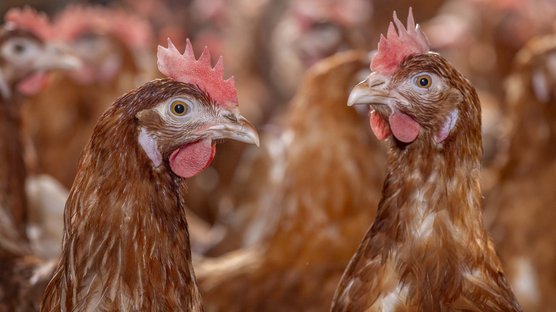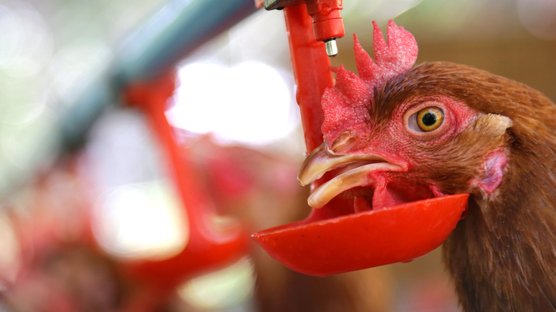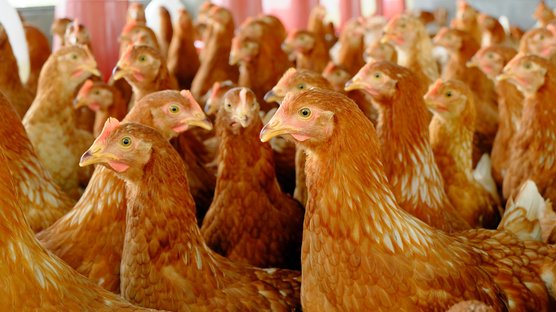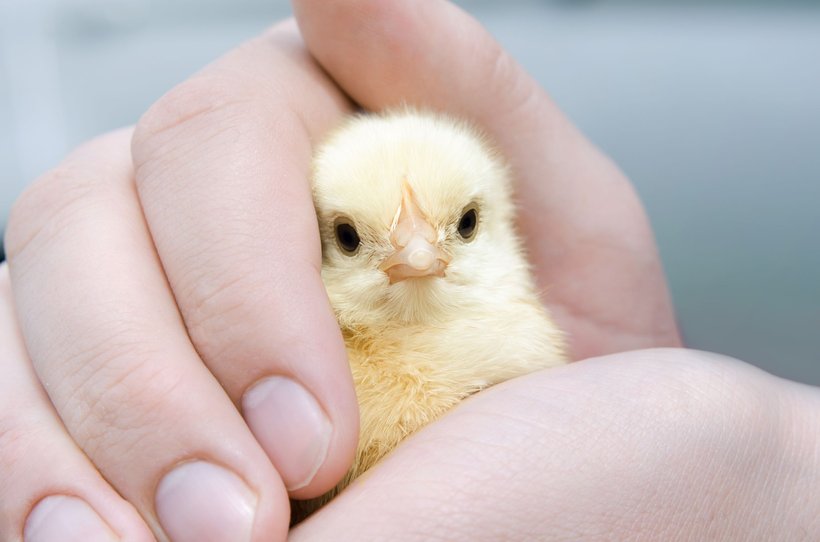
Published on March 17, 2021
Vaccinations, Why, How & When?
Every poultry farm faces infection risks. That’s a fact of life, even in countries with a low disease pressure. Infection risks are related to poultry density, often expressed by the number of birds present per square kilometer. Certain risks you can exclude based on location of the farm. When a disease is not present in the area, there is no risk of introduction.
Having a strict biosecurity plan, with strict biosecurity measures in place, is very effective to reduce the risk of contact infections. We cannot emphasize often enough that biosecurity is the first line of defense.
There are always certain risks which you cannot keep away from your farm and from your poultry flocks. An example of these risks are airborne and contact pathogens. Fortunately, vaccines have been developed that protect against airborne pathogens and against contact pathogens that have passed the biosecurity barriers. Vaccinations are the second line of defense.
Immunity
Immunity is already present at hatch (innate) and can be acquired (adaptive) during life.
Innate (inborn) immunity can be split into three different functionalities:
- Partly a-specific and physical, like body temperature (fever) and body features (skin, mucosa and serosa, stomach Ph, normal gut flora, cilia and mucus in the respiratory tract)
- Partly a-specific and humoral, like natural antibodies (Nab)
- Partly a-specific and cellular (sort of garbage man cleaning up all the mistakes the body makes)
The innate immunity can also be specific, in this case Maternal derived Antibodies play a role in the defense mechanisms.
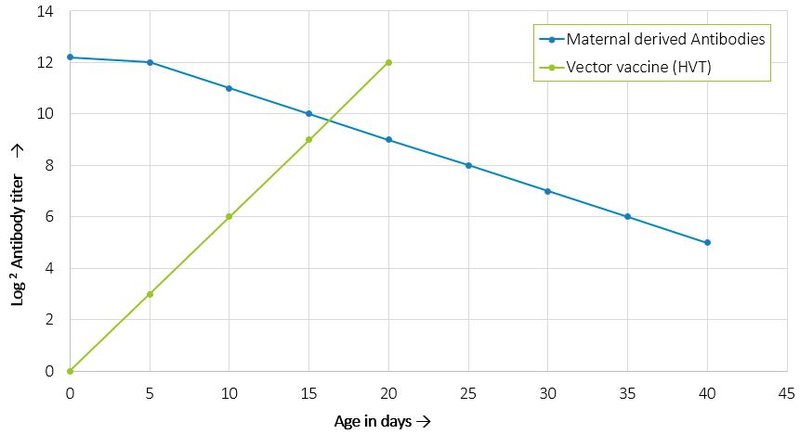
Acquired (adaptive) immunity is a result of exposure to pathogens, either natural exposure to a field challenge or artificial exposure through vaccinations.

Why do we vaccinate?
We vaccinate to immunize our birds against disease challenges that can seriously harm them or are of importance for human health, like a salmonella contamination.
When looking at individual bird level, the protection from vaccination is hardly ever 100%. But vaccines do lower the disease pressure in the population and in the area. Most vaccines prevent the clinical signs of disease and reduce the spread of the pathogen.
Compare this with Covid-19 vaccinations. The goal of the vaccinations is to prevent serious illness and mortality, and to reduce the spread of the virus. This will force the Reproduction Ratio to go below 1, i.e. on average 1 person will infect less than 1 other person, as a result the epidemic fades out. Vaccinated persons/animals are less susceptible for infection and will spread lower amounts of virus when they get infected.
How do we vaccinate?
There are different application methods available to administer a vaccine:
- injection
- wing web
- eye drop
- beak dipping
- drinking water
- spray
The application method depends on the type of vaccine, practical issues, and labor costs.
Against which pathogens we vaccinate depends on the type of farm and the disease pressure on the farm involved. As a veterinarian I always try to get answers to the following questions:
- Is it a rearing farm or a production farm? Is it a parent stock farm? Single age? Multi age?
- Which diseases are present on the farm and in the close surrounding of the farm? What is the biosecurity standard?
Don’t forget, when you sell day old chicks or reared pullets, you will need this information also from the farms of destination so you can protect the birds in the best way via the proper vaccinations.
When do we vaccinate?
When refers to the timing of the vaccinations. Ask yourself the following questions:
- When is protection needed? Already at (very) young age, or during the production period?
- Are maternal derived antibodies interfering?
- Is the principle of priming and boostering applied?
It is very important that you have enough space in your vaccination program. The distance between vaccinations targeting the same, respiratory, organ system must be at least 7 days, but a gap of 14 days is preferred. To achieve this, it can be necessary to combine vaccinations.
In most countries, protection against both classical and variant IB strains is needed.
It should be noted that national/local legislation can also influence the vaccination programs as some vaccinations are obligatory, always follow national/local legislation.
To consider
Vaccinations are not harmless. You are exposing the birds to pathogens and they will react with an immune response. This immune response costs energy and will have its impact on the growth and development of the chicks. Besides, post vaccination reactions can cause complications together with other pathogens or with environmental challenges like dust and ammonia.
Ask yourself the following:
- Is it necessary to vaccinate against a certain disease?
- What is the risk of infection?
- What are the possible consequences of an infection?
- What are the costs of vaccination?
- Which vaccines are available?
- What is the quality of the vaccines available?
Important: you should not introduce new viruses on your farm with modified live vaccines. Check first what is present.
Finally, after the vaccination ask yourself:
- What is the result of the vaccination program?
- What is the vaccine-take?
- What is the reason that a vaccination does not work?
- Was the timing correct?
- Storage conditions?
- Was the application done in the correct way?
Keep in mind the following: what may you expect from a vaccine: i.e. what is possible to achieve?
To conclude
There is no such thing as a standard vaccination program, there is not one single program that fits all. There are several ways to design a vaccination program, but it is important to use the standard principles mentioned above. And even then, conscious choices must be made as chicks cannot grow and develop well when they are too often challenged with vaccinations (i.e. a too intensive vaccination program can do more harm than good).
As new diseases pop up, new vaccines are developed, released, and added to the vaccination programs, making them bigger and even more complex. Please be critical and consider removing vaccinations that are not necessary anymore.

